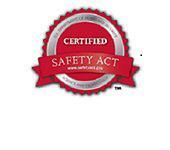National Urban Security Technology Laboratory

The men and women who put their lives on the line to protect our communities and citizens need to know they can rely on the tools they use in emergencies. New technologies are developed every day to enhance responder performance and safety, but are they durable? Will they perform under pressure? That’s what the National Urban Security Technology Laboratory (NUSTL) aims to ensure.
As a federal laboratory organized within the U.S. Department of Homeland Security (DHS) Science and Technology Directorate (S&T), NUSTL brings together the interests and initiatives of the Homeland Security Enterprise with the first responder community. The laboratory’s mission activities in test and evaluation (T&E) and research and development (R&D) help first responders prepare, protect and respond to homeland security threats.
Overview
NUSTL serves as a central and trusted federal resource to support the successful development, evaluation and transition of homeland security technologies into field use for law enforcement, fire and other emergency response agencies. Staff experts work side-by-side with the nation’s first responders to effectively plan and execute tests, evaluations and assessments of existing and emerging technologies.
The laboratory also works to enhance first responder capabilities by partnering with stakeholders to develop viable solutions to radiological and nuclear threats. NUSTL’s Radiological/Nuclear Response and Recovery (RNRR) Team strategically invests in R&D that can characterize and manage a radiological incident, save lives and minimize the impacts on communities through incident stabilization and radiological clean-up. Specifically, NUSTL secures the homeland through:
Collaboration — NUSTL has conducted 41 unique New York Area Science and Technology (NYAST) forums with more than 1,000 active NYAST members from all levels of the government, academia, first responder and law enforcement agencies, as well as the private sector, to discuss pressing issues in homeland security and the latest advancements in science and technology.
Experimentation — NUSTL facilitates an annual Urban Operational Experimentation involving scenario-based tests of emerging technologies with first responders and developers. NUSTL also conducts mission-critical focus groups and operational field assessments of emerging and commercial technologies.
Guidance and Tools — NUSTL’s actionable guidance and technology solutions enhance response capabilities during a radiological or nuclear emergency.
Here’s a quick look at what NUSTL has accomplished in the past year:
- Developed Web-based waste management and decontamination tools to improve incident stabilization methods, radiological clean-up and recovery.
- Authored the science-based response planning guidance for the critical first 100 minutes following a radiological dispersal device detonation and piloted the guidance in cities throughout the U.S.
- Created the Radiological Operations Support Specialist (ROSS) position, a nationally recognized emergency response position to ensure incident commanders have access to subject matter experts with verified skills, knowledge and abilities during a radiological event.
Innovation — NUSTL was the first component within DHS to be awarded a U.S. patent for an invention conceived by its employees. Patent #7781747, dubbed the Citizen’s Dosimeter, is a high-tech plastic card that would be as convenient and affordable as a subway card, with the capability to measure the amount of radiation on a person or in a given area.
Product Assessments — NUSTL has published more than 1,000 knowledge products and technical reports to inform first responders in better selecting, purchasing, using and maintaining homeland security equipment and technologies. These products can be accessed on the System Assessment and Validation for Emergency Responders (SAVER) program page of the DHS website: https://www.dhs.gov/science-and-technology/saver.
Rad Safety Subject Matter Experts — NUSTL’s Nuclear Regulatory Commission license is maintained for radiation sources, which are safely handled by staff during trainings and exercises conducted by federal, state, local and first responder agencies. NUSTL’s subject matter experts provide extensive knowledge and technical expertise in the areas of radiation safety, detection, response and recovery.
Technology Testing — Inside of our test laboratory located in the heart of New York City, NUSTL conducts functional testing of radiation detection equipment to ensure operational readiness before the equipment is used by responders in the field. NUSTL has received, tested and redeployed nearly 20,000 units of radiation detection equipment for use by first responder agencies.
Technology Transition — Scientists and engineers at NUSTL designed, developed, tested and transitioned the Radiological Emergency Management System (REMS), a radiation sensor network that provides real-time data to incident managers to guide response decisions following a radiological or nuclear event.
Training — NUSTL has assisted in training approximately 2,000 state and local first responders during more than 130 training events with state and local agencies throughout the New York City metropolitan area.
For more information, please contact nustl@hq.dhs.gov.
Programs and Projects
- Counter-Unmanned Aerial Systems (C-UAS) Testing and Evaluation Technical Agent
- Technical Assessment of Counter-Unmanned Aerial Systems Technologies in Cities (TACTIC)
- DHS S&T First Responder Electronic Jamming Exercise (JamX 17) Test Support
- DHS S&T Next Generation First Responder (NGFR) Apex Test Agent
- New York Area Science and Technology (NYAST)
- Performance Test and Evaluation at NUSTL (PTEN)
- Radiation Awareness and Interdiction Network (RAIN)
- Radiological Emergency Management System (REMS) Quality Assurance
- Radiological/Nuclear (Rad/Nuc) Response and Recovery (RNRR) Research and Development
- Assessment of International First Responder Rad/Nuc Response Tools for Domestic Integration
- Characterization and Tracking Plume Signatures with Radar Equipment for Consequence Management
- Development of Organic Radiochromic Compounds for First Responder Visual Confirmation of Radiation Exposure
- Development of Resources for the Radiological Operations Support Specialist
- Emergency Worker Dosimetry Guidelines for Radiological Emergencies
- Expansion of the Waste Estimate Support Tool and Investigation of Municipal and Commercial Public Works Equipment
- Fast Running Urban Dispersion Model for Radiological Dispersal Device Releases
- Guidance for First Responder use of Preventative Radiological Nuclear Detection Equipment for Performance during Consequence Management Operations
- First Responder Technologies (R-Tech) Test Support
- Responder Training and Exercise (RTE)
- System Assessment and Validation for Emergency Responders (SAVER)
- Urban Operational Experimentation (OpEx)
- Critical Incident Management Technology Assessment (CIMTA)
Resources
Annual Reports and Posters
- NUSTL Annual Report 2017
- NUSTL Annual Report 2016
- NUSTL Annual Report 2015
- NUSTL Annual Report 2014
- NUSTL Dosimeter Poster
Fact Sheets
- Collaboration Space for Homeland Security Enterprise and First Responders Fact Sheet
- Improving Model Capabilities Fact Sheet
- Critical Incident Management Technology Assessment (CIMTA) Hosted by the National Urban Security Technology Laboratory Fact Sheet
- Improving Radiation Confirmation Technology - Development of an Organic Radiochromic Compound for First Responders Fact Sheet
- Leveraging Existing Video Cameras for Radiation Detection Capabilities Fact Sheet
- National Urban Security Technology Laboratory (NUSTL) Overview Fact Sheet
- New York Area Science and Technology (NYAST) Forum Fact Sheet
- Operational Field Assessment (OFA) Fact Sheet
- Performance Test and Evaluation at NUSTL (PTEN) Fact Sheet
- Application for Radiological Decontamination Fact Sheet
- Radiological Emergency Management System (REMS) Fact Sheet
- Radiological / Nuclear Response and Recovery Research & Development Fact Sheet
- RDD Planning Guidance Fact Sheet
- Responder Training and Exercise Program (RTE) Fact Sheet
- Safeguarding Grand Central Terminal Fact Sheet
- Safety, Health, and Environmental Management (SHEMS) Fact Sheet
- System Assessment and Validation for Emergency Responders (SAVER) Fact Sheet
- Technical Assessment of Counter Unmanned Aerial Systems Technologies in Cities (TACTIC) Fact Sheet
- Turbo FRMAC Expansion Fact Sheet
- Urban Operational Experimentation (OpEx) Fact Sheet
Media
- Snapshot: S&T Labs Partner with Responders to Assess Handheld Explosives Trace Detectors
- National Urban Security Technology Laboratory (NUSTL) Year in Review 2015
- NUSTL Urban Operational Exercise Video
- Responder News: DHS S&T Laboratory Celebrates 70+ Years of Service
- System Assessment and Validation for Emergency Responders (SAVER) Year in Review 2015
Radiological/Nuclear Response and Recovery Guidance and Tools
- Radiological Dispersal Device (RDD) Response Guidance Planning for the First 100 Minutes
- Using Preventative Radiological Nuclear Detection Equipment for Consequence Management Missions Operational Job Aids
 Official website of the Department of Homeland Security
Official website of the Department of Homeland Security

















